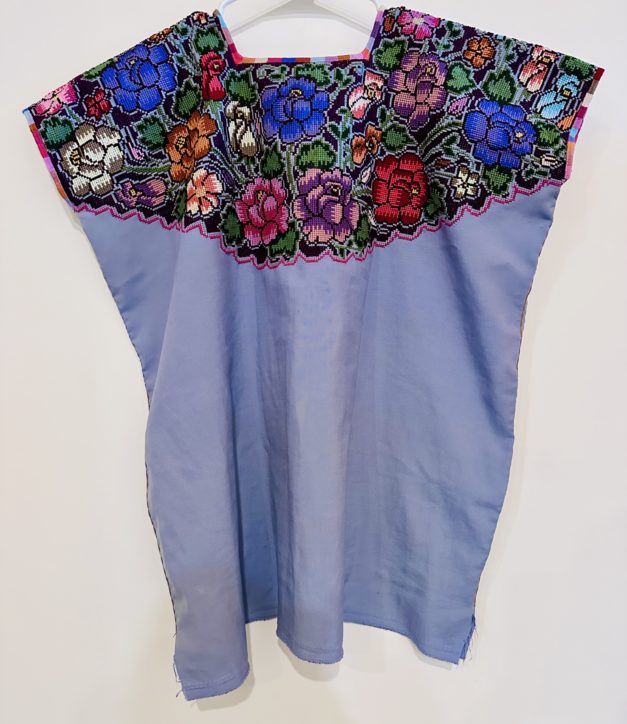Copal is the tree used to carve the wooden figures we call alebrijes in Oaxaca. It is a disappearing resource. Thanks to Jacobo and Maria Angeles in San Martin Tilcajete, where many of the region’s alebrijes are made, there is a bioconservation project called Palo Que Habla to replant copal trees for the next generation of carvers. On land near their home and studio, a vivero (nursery) is planted with young copal trees, as well as other native Oaxaca seeds such as corn, beans, squash and garbanzo.

Palo Que Habla means wood that speaks.
It is open to the public and there is no cost to enter. It is designed as an education center and families are encouraged to bring their children to see how important sustainability and biodiversity is now and for future generations. Please call ahead to arrange your visit.

It takes 30 years for a copal tree to mature before it can be harvested. But that doesn’t stop many from cutting trees when they are 15 years old or younger. Only the white copal wood is used for alebrijes. It is carved when it is fresh and soft, then dries and ages for up to a year before it is painted. The need to sell can take priority over ecological issues here and in many places around the world.

Jacobo Angeles became president of the San Martin Tilcajete committee to establish a community effort to plant copal seedlings and nurture them. He served as leader of this effort for the first six years of the program. The village committee oversaw 40 hectares (almost 100 acres) of land. But, as the trees grew, people became impatient and didn’t want to wait for them to mature. Jacobo and Maria decided to start their own project 10 years ago.

Now, the copal tree resources in the Ocotlan Valley of Oaxaca are depleted and Jacobo says he and other carvers are sourcing their wood from Yautepec, Xochitstlan and Yanhuitlan in the Mixteca region of Oaxaca, at least two-hours from the city. Angeles says that hundreds of pueblo artisans were cutting wood for alebrijes.

(By the way, it is the sap of the copal that is used for ceremonial incense in Oaxaca.)
Five thousand trees are planted three times a year in various locations, on a total of 140 hectares of land, or 346 acres. The biggest challenge, of course, is water. Young trees need tender care. Palo Que Habla nurserymen and women capture rain water and also use well water. Thirty years ago, they could depend on rain alone. Today, it is not enough.

The copal nursery project was started in 1994 when Maestro Rodolfo Morales saw that cutting copal was not sustainable without a plan to put new trees in place to replenish those that were being used for the folk art. Since then, the Rodolfo Morales foundation has donated saplings to the program to ensure a continuous supply of copal.

The Vivero/nursery project is expansive. It aims to create a pollinator garden for butterflies and bees, and will produce local honey from the hives. Lavender fields have been planted. Stately and sacred ceiba trees line the avenue bordering the seedling cultivation area. There is a space for resting and relaxation, as well as well-equipped toilets and a guest house.

I’m in awe of and admire the dedication of Jacobo and Maria Angeles to preserve their culture through commitment to agricultural sustainability via Palo Que Habla. More than this, their vision is to create a teaching and learning environment to sustain diverse regional craft traditions of Oaxaca and the Ocotlan valley.

A recent addition to the portfolio of studio craft is Mogote Ceramica. This is a high-fire clay workshop where functional and decorative pieces are made from local clay, native to San Martin Tilcajete. They are fired in gas kilns at 2246 degrees Fahrenheit and are lead-free. Potters from the region make beautiful glazed pieces that are reminiscent of pre-Hispanic and contemporary design. When I was there, I met visiting artists from Korea, Japan and Mexico City, some of whom are in residence.

The ceramics studio is across the street from the alebrijes workshop, beyond the parking area. Don’t miss it. Take a peek into the sales gallery, too, to see if there is anything there that appeals. My dad was a potter, so I have a special affinity for this craft. I left with eight pieces of pottery! Years ago, I stretched to buy alebrijes made by Jacobo and Maria. They are in North Carolina. They are beyond my capacity now!
Remember, you are welcome to look and admire and there is no charge to visit any of the workshops or the nursery. Enjoy!




















